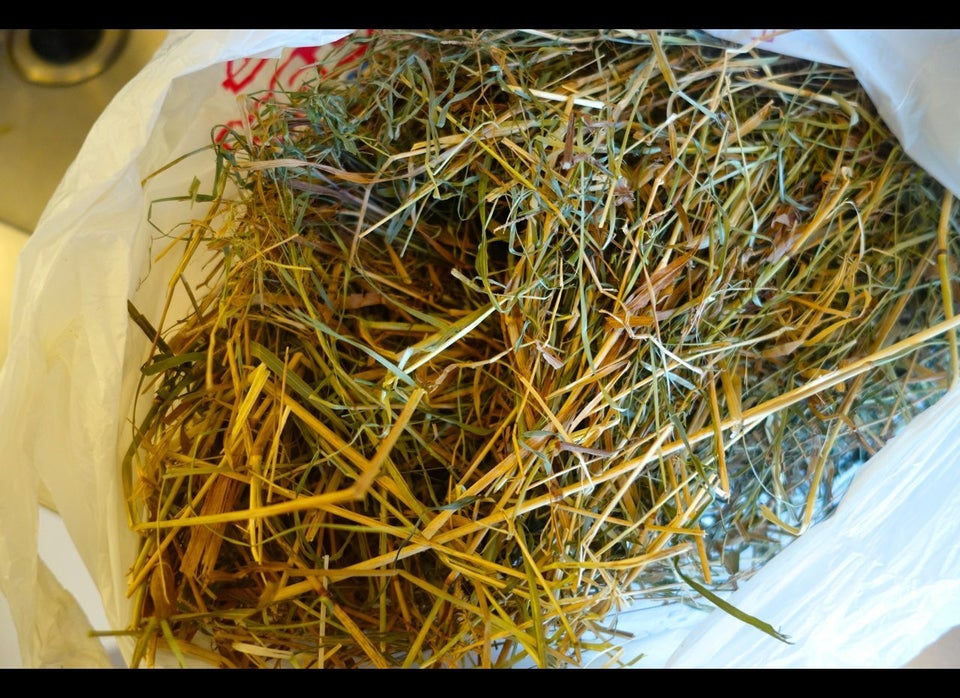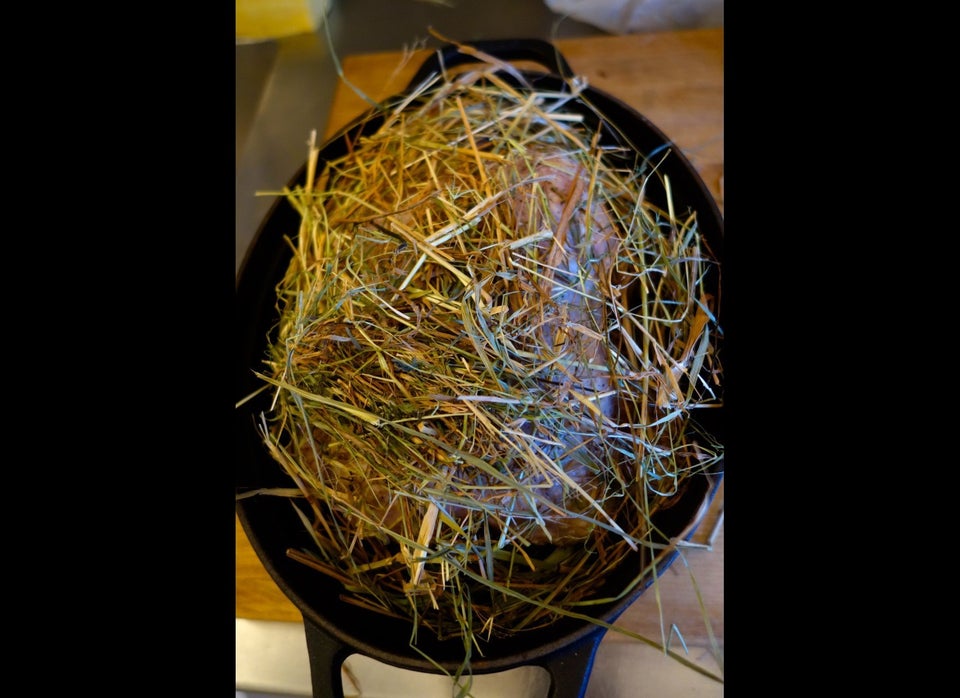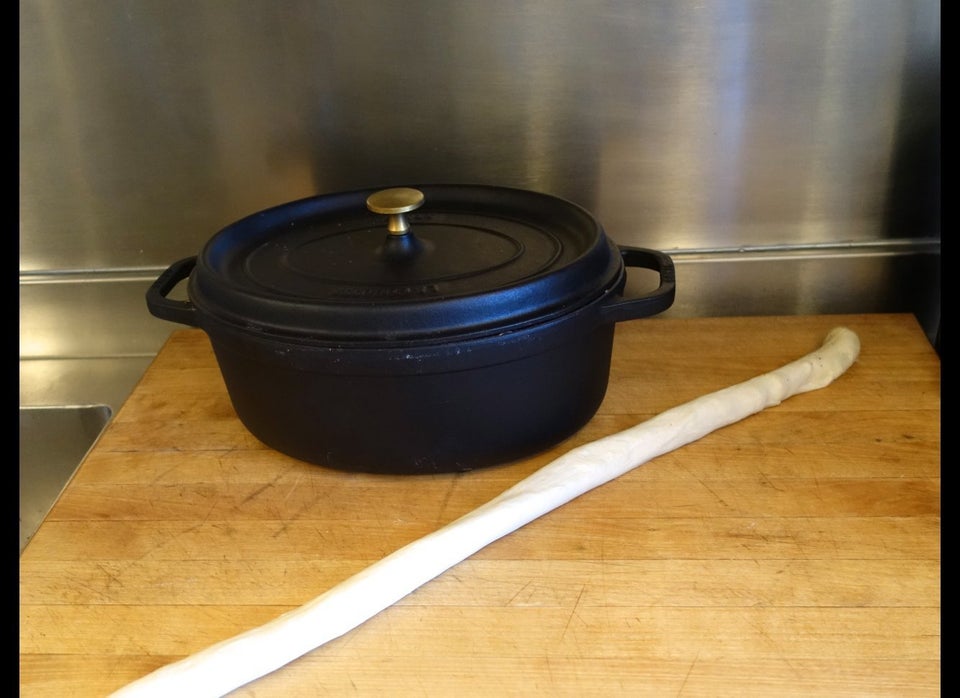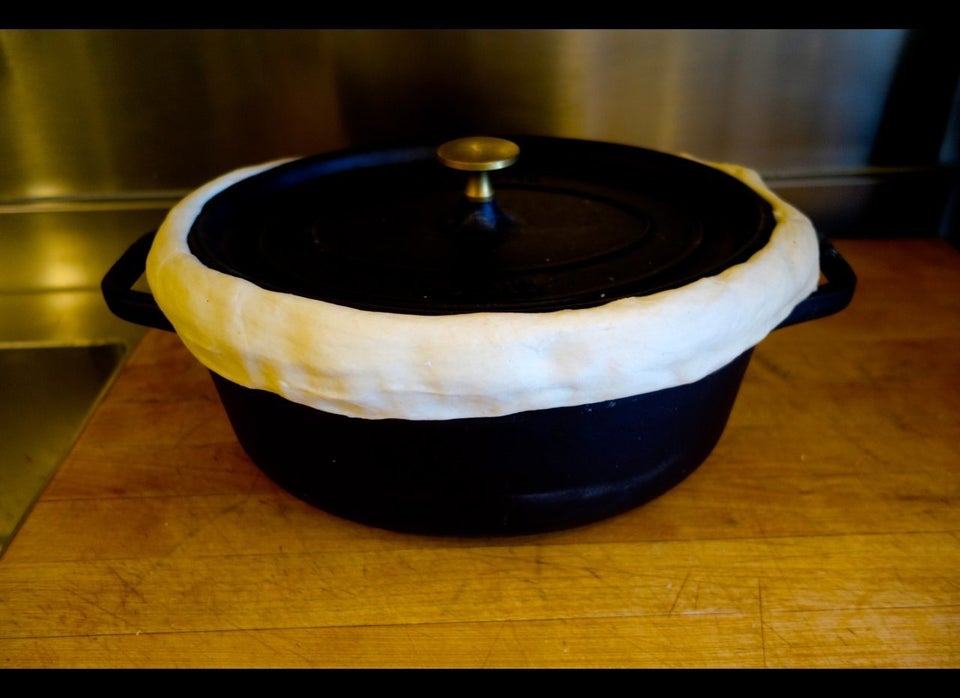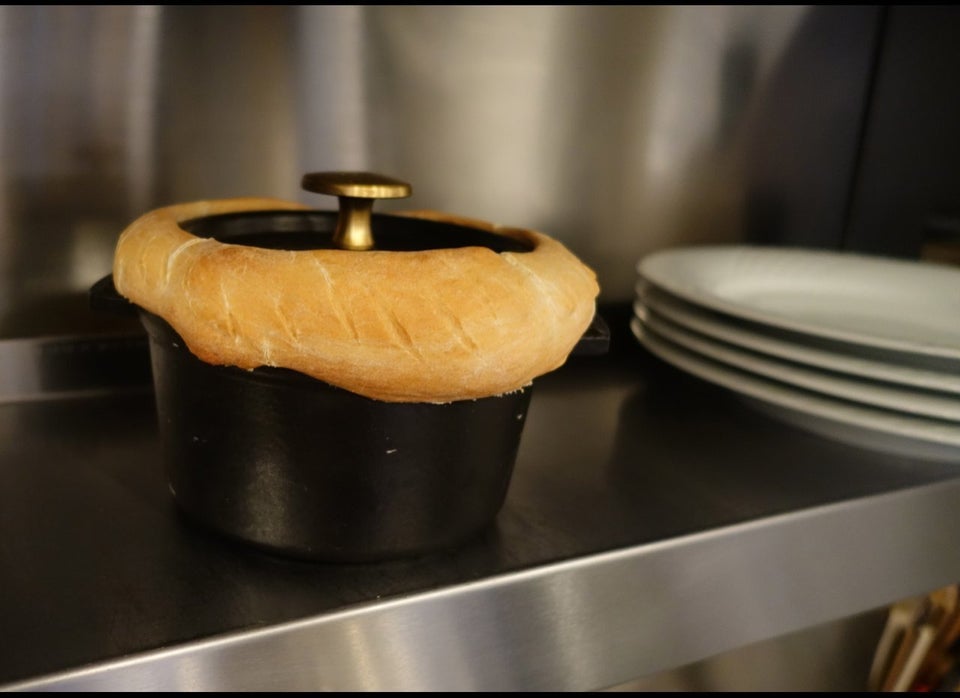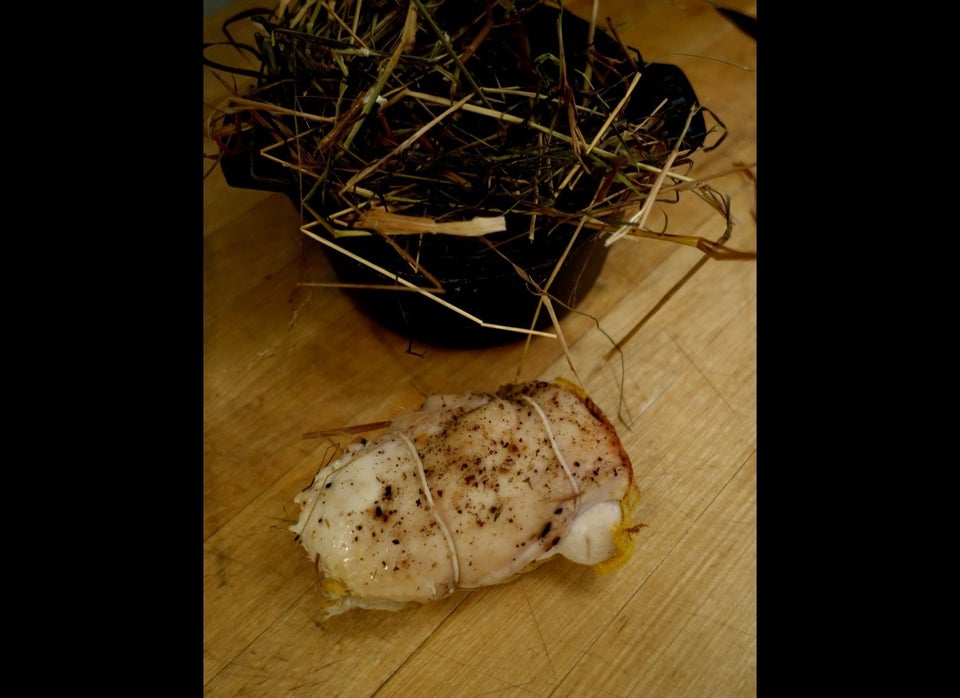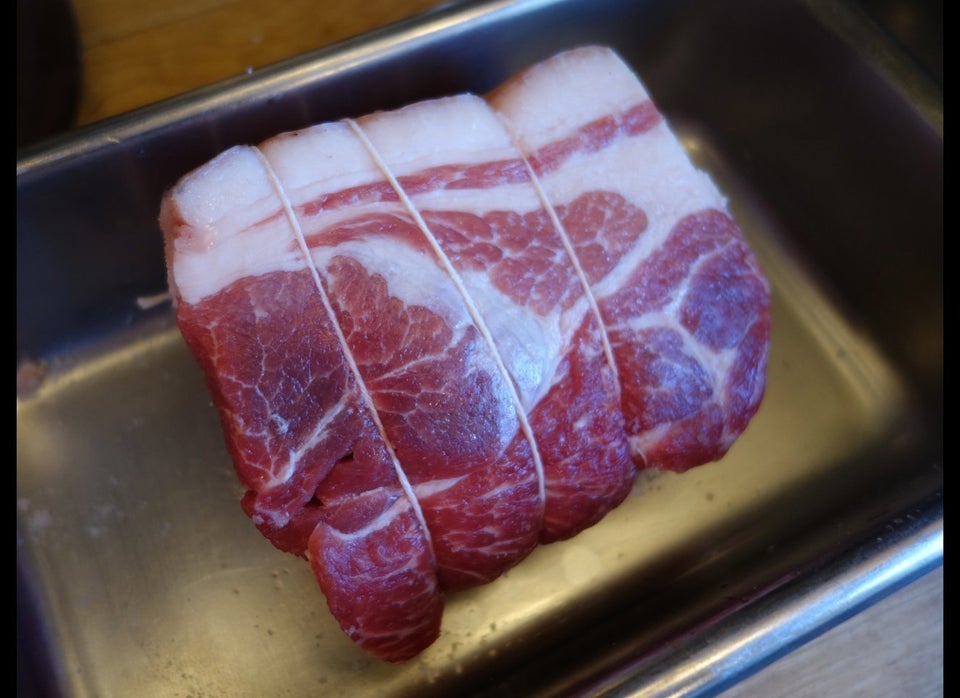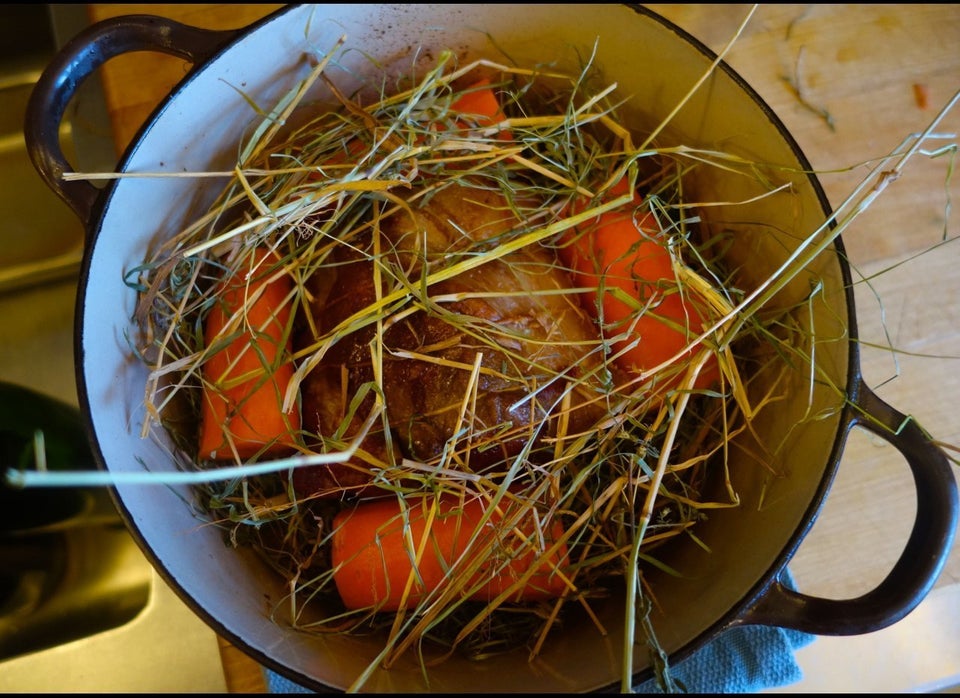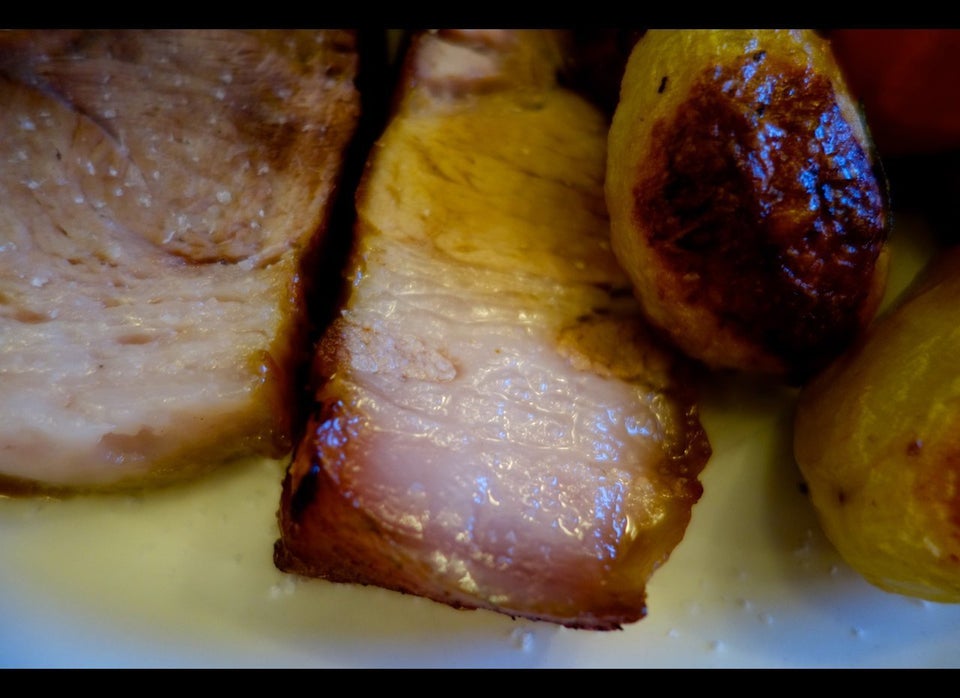I think I got my copy of Paul Bocuse's La Cuisine du Marché in 1976 or 1977, so it would be since then that cooking with hay has been on my to-do list. Bocuse gives a rustic dish of lightly smoked ham simmered in water with herbs and lots of hay: a hay infusion, in fact.
Every now and again, cooking with - or in - hay pops up on the culinary radar screen, but until last week I'd never done anything about it. Quite apart from the shocking scarcity of hay in my local New York City supermarket, I was never entirely convinced that there was much to it.
Perhaps it was the late arrival of spring produce in this part of the country that spurred me into action: As much as Jackie and I love leeks and root vegetables, we were ready for something new. And I'd been reading about the Paris chef Alain Passard, reading that also gave rise to the delicious endive-apple dish I described a couple of weeks ago; a few years back, Mr. Passard gave a boost to the hay fanciers by publishing a recipe for chicken nestled in hay and cooked in a sealed casserole (without liquid).
It looked like a nice dish, but I was still unconvinced that the hay would add much to the chicken's own flavor. Still, I went down to the Union Square farmers' market and asked Keith Gibson of Grazin' Angus Acres if he'd bring me a shopping bag's worth of hay, which he kindly did. This farm grows its own hay for its meat and dairy herds (their milk and cream are delicious), so I had no worries about provenance. Have you ever stuck your nose into a bag of good hay? It's amazing: Even though it's been dried, it has a strikingly fresh, grassy aroma. It smells like spring with more than a hint of tea. It's invigorating and cheering, just like the aroma of freshly mown grass (which is mostly what it is, when you come to think of it).
Even if only a tiny fraction of that aroma were imparted to the chicken, it would be a terrific thing to eat.
I wasn't quite ready to commit to a whole chicken, however, so before surprising a tableful of guests with a main course based on cattle feed I did a dry run using a skin-on breast. This was a success, so I went ahead and planned a dinner-party menu with hay-cooked chicken as the main course.
I lined a heavy casserole with a bird's nest of hay mixed with a few sprigs of thyme and placed a whole chicken on top. I salted and peppered it, laid more hay on top, covered the casserole and sealed the lid on with a flour and water dough rolled out into a long sausage shape and pressed into place around the seam. I baked it in the oven at something over 375 degrees F (190 or 195 C would work) for an hour and 10 minutes, then took it out of the oven and left it alone, still sealed, for 45 minutes more. Historically, hay (more tightly packed than this) was sometimes used as insulation to retain heat and minimize the use of fuel for cooking; between that and the weighty enameled cast iron of the casserole, the chicken remained surprisingly hot. The chicken weighed about 3-1/3 pounds (1.5 kg); when I carved it, I found that the thighs remained somewhat underdone - but cooking it longer would have been to the detriment of the breast meat. So I returned the legs to the oven (which I'd left on, anticipating this possibility) and served the breasts first, sliced and laid over an arugula (rocket) salad dressed not with vinaigrette but with chicken stock reduced almost to a glaze (hot, so it softened the greens). By the time we were ready for seconds, the legs were perfectly cooked.
There is little browning in this kind of sealed-pot cooking, but the hay's spring-like aromas translate into real flavor - and perfume - and the method leaves the flesh moist despite the long time it spends in the casserole. I was tempted to quickly crisp the skin, but the browning would have competed with the hay for our attention.
Along with the arugula salad, I served my simplified version of fondant potatoes - even simpler, in fact, because I let only one surface brown (these can be cooked in the oven along with the chicken).
Another hay adventure combined pork shoulder and big carrots cooked in the same way as the chicken, but for longer. The pork was delicious and the carrots were eye-opening; Jackie said it was as if they'd morphed into some sort of aromatic tropical fruit.
